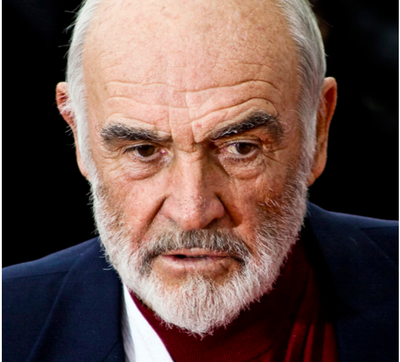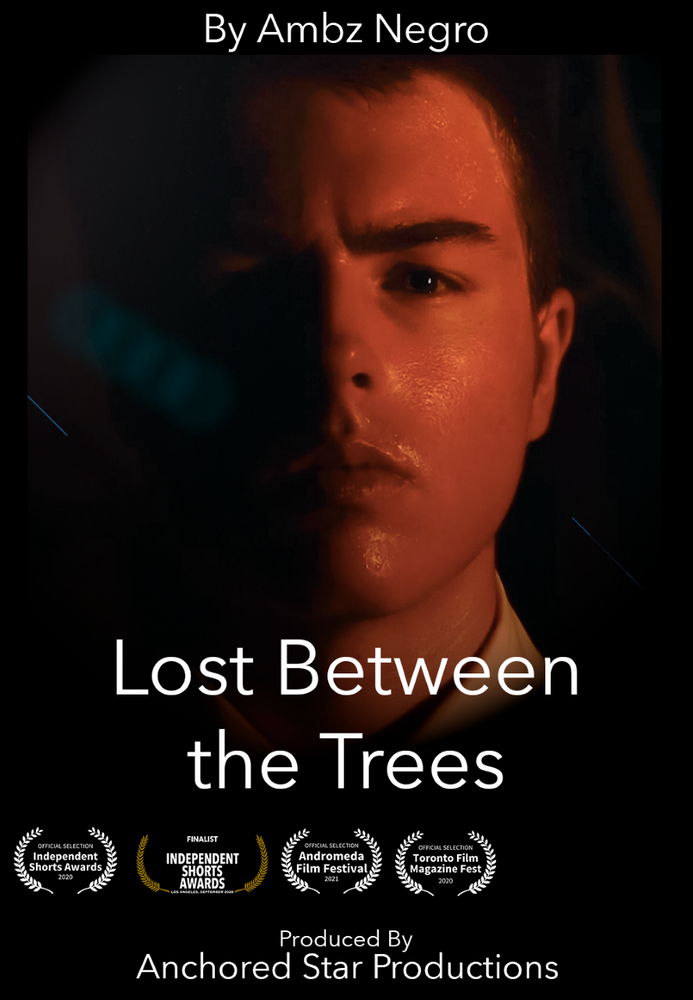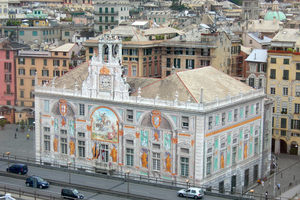Bonded and Unbound: Sean Connery, 1930-2020

Sean Connery led with his shoulders and his wicked grin. Raised in a tenement in Edinburgh, Scotland, he was a brawler, sailor, footballer, and bodybuilder before turning to show business. He went on to become a movie star and accomplished film actor—though with a turbulent private life, a flair for provocation, and a propensity for violence onscreen and off. His straightforward, unselfconscious style and taste for projects with mainstream appeal made him a sought-after leading man and character actor, regardless of whether a run of movies hit big or sank without a trace.
The list of iconic characters that Connery played was nearly unequalled. He was the original James Bond, the defecting Soviet submarine captain Marko Raimus in “The Hunt for Red October,” an aging and tenderhearted Robin Hood in “Robin and Marian,” Daniel Dravot in the film adaptation of Rudyard Kipling’s “The Man Who Would be King,” King Agamemnon in “Time Bandits,” the invincible swordsman Ramirez in the “Highlander” films, The Green Knight in “Sword of the Valiant,” Alcatraz escapee John Patrick Mason in “The Rock,” and—in the role that finally won him an Oscar, and defined the final phase of his stardom—Sgt. Jim Malone in the Prohibition-era cops-and-gangsters picture “The Untouchables.”
He was Dr. Henry Jones in “Indiana Jones in The Last Crusade,” appropriately cast as the father of a character that creators George Lucas and Steven Spielberg thought of as the American James Bond. Despite being a pacifist intellectual professor, Henry was the only person Indy feared, and as skilled a performer as Harrison Ford is, when Connery sneers and barks at him, his shamefaced expressions don’t always seem like acting. Connery played the title character—a reclusive, legendary writer—in “Finding Forrester,” because when you’re casting a part like that, you need someone so charismatic that you believe he would continue to matter even if he’d become invisible.
Which is what happened to Connery, after a point. His last onscreen role was as an aged but still debonair Allan Quartermain in “The League of Extraordinary Gentlemen.” He reportedly had a miserable time filming it, and after its release, Connery exited the public eye (with some rare exceptions, such as voice-over work and festival appearances). Connery’s death at 90 in the Bahamas—a paradise he visited often while playing James Bond—came at the tail-end of a long absence from the screen, after a career that took him through multiple phases that were all intriguing for their own reasons. There was a striving male ingenue phase where he was a competitive bodybuilder and then a stage actor and bit player; a “who’s that handsome young man” phase, where he played supporting roles in films like the Lana Turner vehicle “Another Time, Another Place”; a gorgeous movie star phase; a dynamic middle-aged character actor phase, and finally—starting with his 1987 Oscar-winning performance in “The Untouchables,” and continuing through the early aughts—a “legend” phase that was as much about capitalizing on the presence of Sean Connery as telling whatever story Connery’s acting was trying to serve.
To deal with Connery is to deal with changing conceptions of manhood, at its best and worst. Intemperate and combative from youth to old age, Connery never mellowed in the way that he theoretically should have, given the range of opportunities to evolve that were within grasp thanks to his fame and wealth.
His aura of coiled menace flowed from his personality and upbringing. He was still getting into bar fights and scrapes with street gangs well into his twenties, still getting into violent altercations on film sets in his forties, and still stumping for violence as a means of ending an argument with a partner in his fifties. He notoriously defended the necessity of sometimes slapping women in a 1965 Playboy interview. When Barbara Walters brought this up in a TV interview 22 years later, he doubled down. A 2005 memoir by Australian actress Diane Cilento—an Oscar nominee for 1963’s “Tom Jones,” and Connery’s wife from 1962-1973—said Connery suffered from pathological jealousy, emotionally and physically abused her, and pressured her to give up her career.
In 2006, when he was 76, he canceled a scheduled appearance at the Scottish Parliament’s Festival of Politics when he learned that the moderator intended to ask him about his prior statements on violence against women. Connery stated “I don’t believe that any level of abuse of women is ever justified under any circumstances,” denied ever holding such views, and said himself and through friends that his previous remarks had been taken out-of-context (though it’s hard to see how that would be possible, considering that the Playboy remarks were reproduced verbatim, and the Walters exchange was broadcast to millions).
Connery’s brutish persona offscreen will be forever fused to his image as a leading man: patriarchial, reactionary, a lad, a boss; a self-satisfied asshole, often a bully; the best friend, the big brother, the mentor; the taskmaster and shit-stirrer; a man who considers fists an extension of words; and, virtually without exception, the type of person who rarely questions himself, and does not take kindly to being questioned.
Like the saying goes: it comes from somewhere. Connery was a street fighter who was used to solving problems with his knuckles. He continued to do so after he’d started to figure out how to make a living as an actor. According to the biography Sean Connery: Neither Shaken Nor Stirred, in 1953 he intimidated a feared Edinburgh gang that was trying to steal his jacket in a pool hall, then singlehandedly beat up a group of them after they followed him home to get revenge. During the filming of “Another Time, Another Place,” Lana Turner’s boyfriend Johnny Stompanato became convinced that Connery was sleeping with her, stormed onto the set, and confronted Connery with a loaded gun; Connery took it away from him and knocked him down. John Boorman told RogerEbert.com contributor Simon Abrams that when he had to convince Connery to reshoot some physically demanding time-lapse scenes for “Zardoz” and a camera loader accidentally exposed the film the second time (necessitating a third attempt), the star flew into a violent rage. “He went after this camera-loader and nearly killed him,” Boorman said. “It took three grips to restrain him.” When the story got around, the camera loader became unemployable and had to change his name to find work again.
Connery’s flinty-eyed dangerousness made him an emblem of an ancient brand of masculinity—one that would become increasingly questioned during the second half of his life and in the decades following his retirement. Like certain film stars from before his time (like John Wayne) and after (think Mel Gibson), Connery continues to fascinate and excite despite (or because of) knowledge that the image and the man had a lot in common.
Such is the dark lure of the macho film star. Connery was one of the greats, and by the time he hit 40, he was such a known quantity that he often performed in his native Scottish accent no matter where his films happened to be set. When movies create unlikely backstories to explain why, say, a legendary US Army colonel in the 1988 Connery vehicle “The Presidio” has a brogue—or don’t bother explaining it at all—it’s the highest praise for an actor. It means the audience will accept him in any role, regardless of whether he was right for it on paper.
Ian Fleming initially complained that the lean, blue-eyed, English James Bond of his fiction had been cast with a bushy-browed Scotsman with dark brown eyes and the marble-carved physique of a Mr. Universe finalist (which Connery was, back in 1951). But he got used to it, just like future audiences would get used to accepting Connery as an Irishman (“The Untouchables), a Soviet Russian (“The Hunt for Red October”), a Norweigan (“The Red Tent”), a Scandanavian (“The Terrorists”), a Saudi (“The Next Man”), an Egyptian (“Highlander”), a Morrocan (“The Wind and the Lion”) and innumerable “American” characters who made you imagine foggy highlands the second they opened their mouths. Conneryologists could have full conversations just by reciting lines he was known for, leaning into the actor’s glottal vowels, scooped r’s, and slight lisp. “He pullsh a knife, you pull a gun!” “He blew a fushe.” “I should’ve mailed it to the Marx Brothersh!” “We shail into history.” His voice was so distinctive that even the worst impressions were still recognizable as Sean Connery. He might’ve been the most widely imitated male Hollywood star since James Cagney.
Starting with 1962’s Dr. No, Connery was the original James Bond, defining the character’s signature blend of icy brutality, hypersexuality, and smug quips. Connery played Bond for 11 years, despite loathing how it defined and constrained him as an actor. He left the franchise and came back twice, first in 1971’s “Diamonds are Forever,” then a dozen years later in the off-brand “Never Say Never Again.” Each Bond actor after Connery cultivated his own vibe, from Roger Moore’s postmodern Cary Grant ruefulness and Pierce Brosnan’s leather-tough decadence through Daniel Craig’s craggy pub-bloke naturalism. And yet, in the end, they were all responding to Connery, and to the audience’s collective memory of Connery.
But it would be a mistake to assume that Connery somehow naturally was—or became—James Bond. It took work to get to the point where he could put on a tuxedo and holster a Walther PPK and incarnate one of literature’s most famous protagonists. According to Bond historians, the seeds of Connery’s performance came from early Bond director and consummate English gentleman Terence Young, who took the unpolished Scotsman under his wing and taught him how to be credible as a man of the world. It was “My Fair Lady” as bromance. Young taught Connery how to speak, how to carry himself, how to seem at home in a fancy restaurant or high-stakes casino, how to order drinks and what sort of drinks to order. Connery absorbed it all, then added himself to the lessons. When the cameras finally rolled, he exuded a cruel gravitas that was not only true to the spirit of Bond on the page, but established the character as the first borderline-antihero in a long-running hit franchise.
Connery-as-Bond delighted in being Bond—a bastard, a heel, a prodigious lover (mostly) uninterested in commitment, and an attack dog for England who didn’t care about politics or ideology, only in accomplishing the mission. Like Humphrey Bogart’s steamroller incarnations of Sam Spade and Philip Marlowe, Connery’s Bond seemed untroubled by the notion that anyone might disapprove of him for whatever reason, if indeed he gave the matter a moment’s thought, which he probably didn’t. At a time when feminism and Freud were making inroads in Western culture—in film and television as well as fiction and theater—Bond stood apart as a gleeful rebuke. Connery’s Bond questioned his decisions and analyzed his mistakes, but he wasn’t introspective. He was, in every sense, a man of action. What you saw was what you got.
Connery was reluctant to sign on as Bond because he feared that a high-profile film series might typecast him. He was right on both counts, and he resented the golden shackles of Bond almost immediately. Some of the most distinctive parts he played in the late 1960s and early 1970s seem like attempts to unpack or subvert the cruel/glamorous machismo that he embodied as Bond.
Alfred Hitchcock cast him in “Marnie” as Mark Rutland, a manipulative widower (and, at one point in the story, rapist). Connery exhibited a lot of the same charisma here as he did in the early Bond films, but it was curdled and frightening, as if a gauzy filter had been removed. His performances for Sidney Lumet in “The Molly Maguires” and “The Offence” took Connery deep into the moral morass of supposedly righteous violence. The latter film is about a detective who beats a suspected child rapist to death in custody, only to discover that what he was really attacking was his own attraction to that sort of depravity; it’s one of the bleakest movies Connery has ever been involved with, and one of the best, and the way it critiques state-sanctioned brutality (which is often carried out by men who might be in prison for felonies if they weren’t wearing badges) still feels revolutionary. His performance as a former British Major and mercenary in Richard Lester’s 1979 “Cuba” is practically a coded critique of James Bond. The character trains Fulgencio Batista’s forces to resist Fidel Castro’s revolutionary army, and when things go irrevocably bad, he leaves the mess behind, abandoning a woman he’d fallen in love with to save his own skin.
In the mid-1970s, Connery started flirting with character actor parts, while retaining top billing and movie star prerogatives. The science fiction oddity “Zardoz” failed at the box office only to remain a cult object (and later become a meme) thanks to Connery’s unflattering look (ponytail, Fu Manchu mustache, bare chest, red diaper), but it’s one of director John Boorman’s most joyously unhinged films, and it couldn’t be more direct in its critique of warmongering theocracy and patriarchy, which gives violence the cultural centrality that love and sex should have (“The gun is good, the penis is evil,” declares the film’s title god, a floating stone head).
Connery played an exuberant imperalist in “The Man Who Would Be King” (costarring with arguably the second greatest movie spy of the sixties, Michael Caine) and an aging, paunchy Robin Hood (opposite Audrey Hepburns Maid Marian) in “Robin and Marian”—a touching portrait of what happens to action heroes when they go grey and start to feel the weight of the years. The 1981 science fiction drama “Outland” remakes “High Noon” as a Western in space, but it’s a post-seventies Western, filled with rage towards megacorporations that take the place of governments, and bosses so greedy that they would give underpaid miners amphetamines that let them work without sleep until they finally go mad and try to kill each other. (Poster tagline: “On Jupiter’s moon, he’s the only law.”)
The hinge role for Connery was grizzled cop Jim Malone in “The Untouchables,” a melodrama/action picture with a poetically profane David Mamet script and an Ennio Morricone score that mingled a disco backbeat and a tinkly silent-film piano. Connery’s character mentors US treasury agent Elliott Ness (Kevin Costner), a by-the-book, milquetoast G-man who can’t nail gangster Al Capone (Robert DeNiro) unless he’s willing to play dirty. The script validates the same post-Miranda warning cliches that had become gospel in American movies by that point; from “The French Connection” and “Dirty Harry” through “Raw Deal” and “Cobra”, the best cops were the ones who were willing to torture and terrorize suspects because they knew they were guilty of something.
But even in the era of routine police violence against unarmed protestors, the movie is still so entertaining (and shockingly funny) that it can’t fail to mesmerize. Connery is the engine of the picture, and (along with Charles Martin Smith’s meek accountant, who is surprised to realize how much he enjoys busting heads) the source of its earthy humanity. As in “The Last Crusade” and so many subsequent movies pairing Connery with a younger male lead, the star’s casting has a meta component: while Malone tutors Ness on how to be a cop, Connery tutors Costner on how to be a kick-ass action hero. (An anecdote from Costner confirms what a star Connery still was in 1987, sixteen years after his last performance as Bond. He was on an outdoor set in downtown Chicago talking to Connery between takes when he noticed a beautiful young woman gesturing to him from behind a security line. Costner finally excused himself to go over to try to flirt with her, and was mortified when she asked if he would go get Connery’s autograph.)
The final phase of Connery’s career was less interesting because he leaned too hard on the idea of Sean Connery, movie legend. Notwithstanding the odd substantive effort like “Finding Forrester” and the anthology “Playing by Heart” (holding his own against Gena Rowlands), he seemed content to be a highly compensated poster for himself.
One of the loudest audience reactions this writer ever heard was at an all-audience media screening of “The Rock” at New York’s now-defunct Astor Plaza Theater in 1996: when Connery’s character finally appeared after a half-hour build-up—striding in slow motion under armed escort, his long grey hair extensions swaying—the packed house applauded, hollered, and stamped their feet. But it was Connery, the name and the image, that they were cheering for. For all his cranky alpha male ruggedness, the character is a Viagra-engorged cartoon of senior potency, and a vastly less credible human being than the film’s other lead characters (particularly Ed Harris’ disaffected black op-turned-terrorist, and Nicolas Cage’s noncombatant chemical weapons specialist). Ditto Connery’s silver fox of a thief in “Entrapment,” his dyspeptic, misogynist researcher in “Medicine Man,” the ex-cop in “Rising Sun” who is supposedly as Japanese as the Japanese, and the famous defense lawyer in the 1995 legal thriller “Just Cause.”
But by that point, he’d already been through more career phases than most actors have major parts, so you could consider the less demanding roles part of an extended, late-in-life victory lap. James Bond was warned that you only live twice. Sean Connery lived more lives than that, and they were as varied, troubling, and fascinating as his best films. He will be watched, written about, and reckoned with as long as people care about movies.





